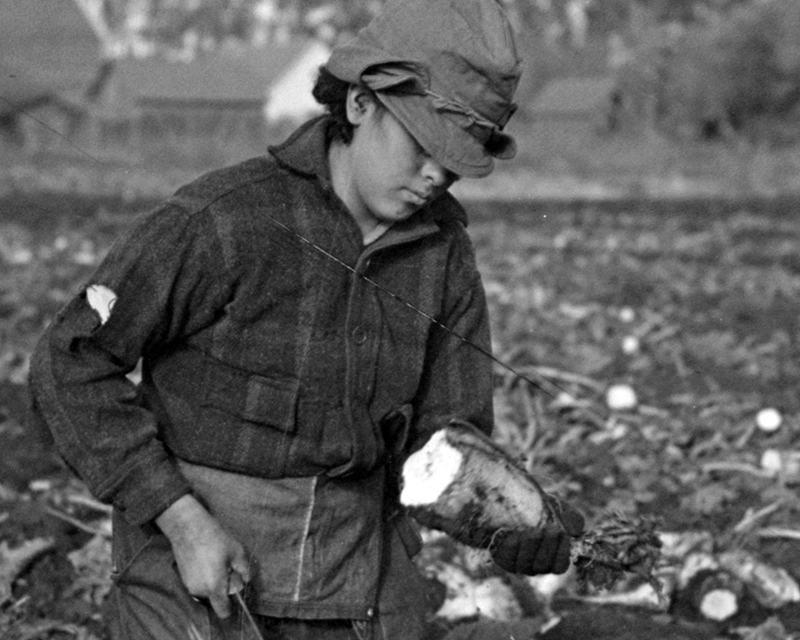
October 2, 2023
Ever wonder what local agriculture looked like nearly a century ago? Northland Community and Technical College is teaming up with the University of Minnesota Crookston (UMC) to offer a close-up look at the 1937 sugar beet harvest as seen through the eyes of photographer Russell Lee. A gallery opening is scheduled for Monday, Oct. 9, at the Thief River Falls campus, with photos planned for display at both campuses as part of the college’s Hispanic Heritage Month celebration.
“The great thing about art is that each observer can interact and have a personal experience with it,” said Kirsten Michalke, Northland Dean of Workforce Development and exhibit organizer. “Some may relate to these photos by reminiscing about their family farm and evoke memories of grandparents. Others may wonder about the sheer vastness of the beet fields and the required manual labor to grow and harvest a crop. Through collaboration with the University of Minnesota Crookston, Northland selected these prints specifically to honor the migrant workers and their legacy during Hispanic Heritage Month, which coincides with our region’s beet harvest.”
“Roots of the Red River Valley” features more than 80 images by photographer Russell Lee, known for his work with the Farm Security Administration. The exhibit portrays three distinct points of view: the migrant worker, the farmer, and the factory.
“These photos are spectacular,” Michalke said. “Lee was a pioneer in the use of flash for indoor photography. Visually and artistically, photographers and artists will enjoy the composition of the photos. Personally, as someone who was raised on a farm, the photographs are representative of our agricultural history and am appreciative of the people, land and equipment. By participating in Hispanic heritage activities this month, we can reflect on our connections to each other.”
The black and white images — selected from a collection at the Library of Congress — offer a uniquely intimate look at the diverse lives of early 20th Century ag workers and the importance of sugar processing to the Red River Valley. All photos were taken in Polk County near Fisher and Crookston, as well as at the first processing plant built in 1926 located in East Grand Forks, Minn.
“The beauty and quality of the photos entices the viewer to take a step back in time and reflect on our history and perhaps ponder over the present,” Michalke said. “As a community college, we need to be accessible and relevant to everyone in our community. Our schools, workplaces, and rural communities are becoming increasingly diverse. This art display is one way to bring people together and share in an experience.”
Gallery opening features first-hand connection
The gallery opening begins at 2:30 p.m. with refreshments, followed by a program featuring speakers from UMC and Northland beginning at 3:00 p.m. at Northland’s Thief River Falls Campus (Gunderson Commons). Honored speakers include Chancellor Mary Holz-Clause, University of Minnesota Crookston; President Sandy Kiddoo, Northland Community & Technical College; and Kenneth Mendez, University of Minnesota Crookston Postmaster.
Mendez, whose father and family members are depicted in some of the photos, was the driving force behind securing Russell Lee’s exhibit for UMC. He also has an oral history recorded and transcribed from his father that he will be sharing at the event, connecting younger generations with some of the history of Chicanx roots in our region.
“I am thankful that these images are being displayed at Northland,” Mendez said. “Our family was brought to this region many years ago, and seeing the amazing photographs of Russell Lee brings into focus how labor intensive the sugar beet harvest was in the 1930s.”